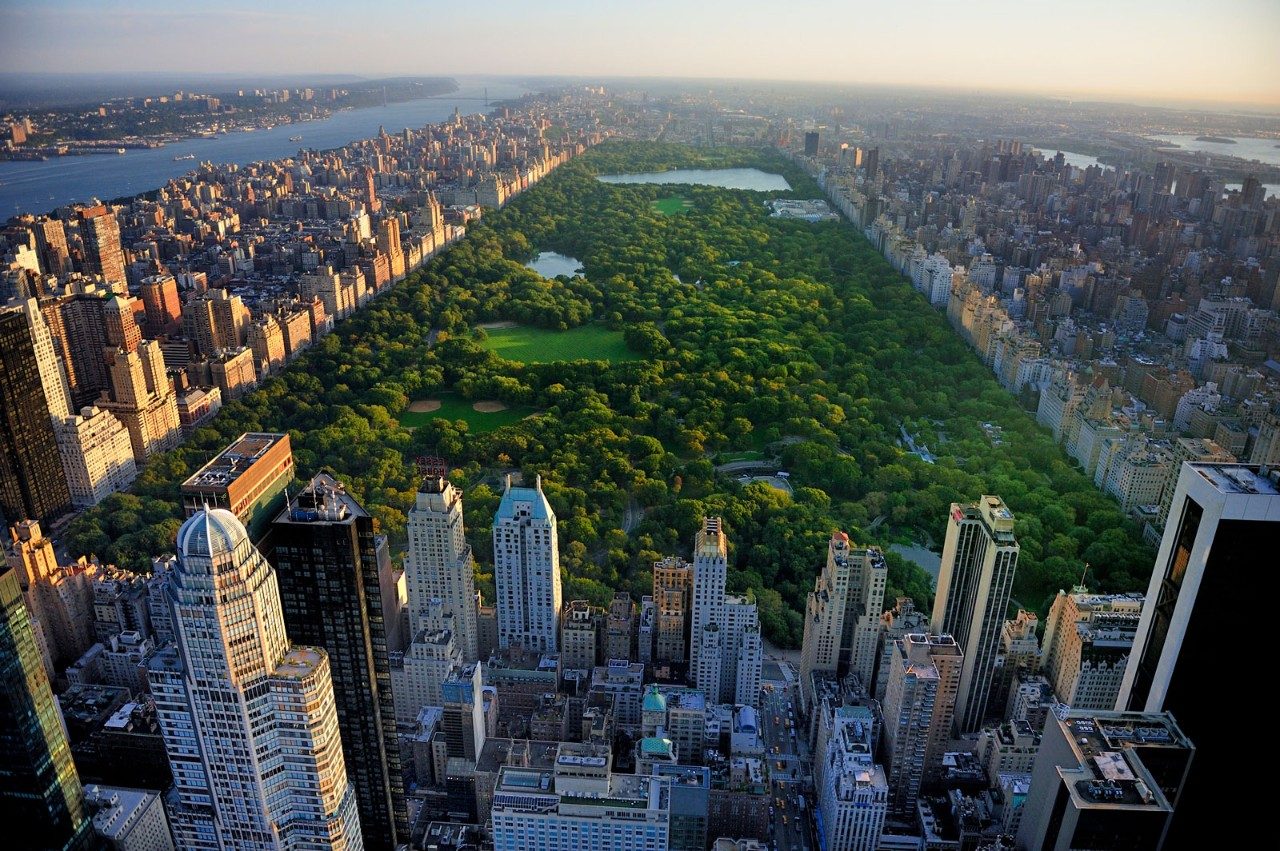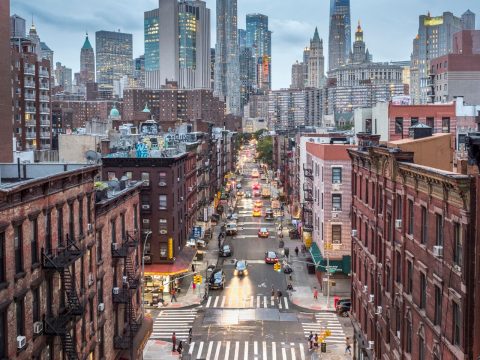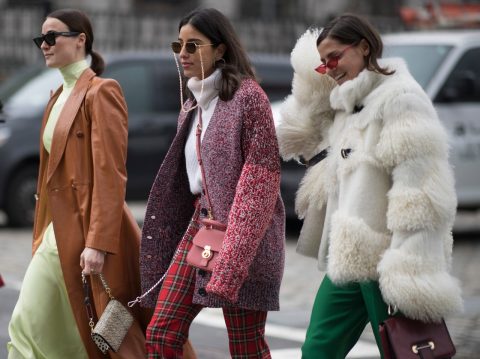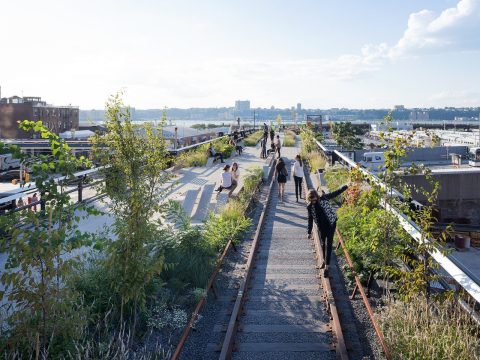Read Before You Leave – New York City

Arriving in New York City is like stepping onto a movie set – a pedestrian yells at an overzealous motorist; an off-duty model slinks by in artfully shredded jeans; a displaced hipster from Brooklyn bemoans the G train on the latest smartphone; and the ubiquitous, no-frills hotdog carts always seems to have eager queues. And even if you don’t feel like you’re in a movie, watch your step because you could inadvertently wander into a live shoot: at any given moment major films and NYC-based TV shows are being filmed all over the city from the brownstones of Brooklyn to the dive bars of the Lower East Side. New York City is familiar even to those who have never visited thanks to this filmed record – Sex and the City tours are still being eagerly taken by a diverse crowd – from the Mid-West to the Middle East – and Katz’s Deli is patronised by Meg Ryan impressionists on a daily basis. Despite our cultural affinity with the city, there are still a few things every visitor should know before arriving in that concrete jungle. To make it in New York City, follow our Read Before You Leave guide.
Flight time
Qantas flies to New York via Dallas Fort Worth, Auckland or Los Angeles. Total flight time is about 19 hours from the Australian east coast and around 22 hours from Perth.
Entering the US
Australia is a participant in America’s Visa Waiver Program, meaning Australians don’t need a visa for visits of 90 days or less. We must, however, obtain an Electronic System for Travel Authorization (ESTA) through the Department of Homeland Security site. Authorisation is usually granted immediately but it’s advisable to apply at least 72 hours before you travel in case there’s an issue.
If you overstay, the American Government could arrest, deport or even bar you from returning to the States.
Flying in to LaGuardia Airport, Newark Liberty International Airport or John F. Kennedy International Airport
LaGuardia is located in the northern part of Queens near Flushing Bay, about 13 kilometres from Manhattan. The Metropolitan Transportation Authority (MTA) provides buses between LaGuardia and Manhattan. The LaGuardia Link Q70 takes passengers from Terminals B and C to the 74th Street/Roosevelt Avenue subway.
Newark Liberty International Airport is about 30 kilometres west of Manhattan. The Airtrain operates 24 hours a day, 365 days of the year and shuttles passengers from the airport to New York City’s Penn Station in about 30 minutes.
JFK is in Jamaica, Queens, about 25 kilometres southeast of Manhattan. At JFK, Qantas passengers will disembark (and depart from) Terminal 8. The terminal benefits travellers with streamlined check in processes, upmarket retail options and easier access to lounges including a trio of lounges for Qantas Frequent Flyer members.
As one of the busiest international air passenger gateway into the US, JFK is well connected to Manhattan. The AirTrain stops at each terminal (with the exception of Terminal 4) and connects to the subway. Take the AirTrain to Jamaica Station, hop on the subway and you’ll be at Penn Station within 50 minutes.
Taxis are plentiful at all three airports. Taxis at JFK charge a flat rate of US$70 to reach Manhattan, with an additional US$5 surcharge added during peak-hour. From LaGuardia taxis are metred, costing an approximate USD$40 to reach Times Square; Newark Airport taxis range in cost.
Vaccine advice
While there aren’t any specific vaccines recommended for travel to the US, it’s worth checking the US Centers for Disease Control and Prevention or SmarTraveller for updates on infectious-disease outbreaks. It’s also wise to ensure all your vaccinations are up to date.

Transport tips
New York City wouldn’t be New York City without its subway. We say, join the straphangers – the subway is the quickest, cheapest and easiest way to get around. Each trip on the subway costs a flat rate of US$2.90, no matter where you’re going. It operates 24 hours a day and travels through Manhattan, Brooklyn, The Bronx and Queens. You’ll need a MetroCard – buy one at a booth or a MetroCard vending machine for US$1 and top it up as and when necessary — or you can use OMNY, the contactless payment system that requires a simple tap of your smartphone or card. Fares are helpfully capped with OMNY so if you use the same card more than 12 times beginning from Monday, you’ll ride for free through Sunday.
Money matters
At the time of writing, the Australian dollar was buying around 63 US cents – check a reliable currency conversion service for up-to-date foreign-exchange rates.
Check with your bank that you won’t be hit with extra fees when using your credit card in New York City. Your Australian bank and American ATMs will each charge you for withdrawing money from your debit card, too, so it might be worth organising a travel card (most banks have one) with low or no fees to use while you’re away.
In any case, inform your bank of your travel plans, lest overseas purchases are misconstrued as fraud and your card is cancelled.
Tipping
For Australians, tipping in the US seems like an incredibly complex ritual. It certainly can be a bit confusing for those who aren’t used to the practice but it’s important to get your head around it before arriving. Remember, tipping isn’t optional and adding any less than 20 per cent to a food bill at a restaurant is a huge no-no. Not sure when and where to tip? We’ve broken it in detail down here.
Weather wise
New York City has very clear seasons: in the summertime, expect exploded fire hydrants and sitting in front of the overworked air-conditioner with average highs of 29 degrees Celsius during July; in winter you could find yourself feet-deep in snow while spring can remain chilly well into April. Autumn is generally mild and pleasant with daytime temperatures between 12 and 18 degrees Celsius.
When to go
Each season has something to offer visitors. New York City is magical around Christmas time with decorations, ice-skating and falling snow. Spring offers renewal – New Yorkers thaw out and take to the streets for markets, walks in Central Park and al fresco dining. Autumn, or fall, as the season is known to Americans, means crisp, bright days and mild temperatures. The summertime (June - September) can be hot – but that means trips to Coney Island, picnics in the park and steamy nights on rooftop bars.
Dress code

Layering is key for winter, as is a big puffy coat. You might find them cumbersome but that will be the least of your concerns when you’re walking to the subway in minus 10-degree weather. A pair of waterproof boots are necessary for tramping through the snow. The rest of the time, New Yorkers are pretty stylish so leave the Kathmandu cargo shorts at home and opt for your street-style best. Just imagine The Sartorialist is lurking, about to snap your ensemble for posterity. As far as accessories are concerned, go big or go home – remember, this is the city that spawned the great Iris Apfel.
Tap water
The tap water is drinkable in New York City and is among the best drinking water in the country. The water is delivered from huge water reservoirs upstate – more than 1 billion gallons a day.
Insurance policy
Without comprehensive travel insurance, medical treatment can be cost prohibitive in the US. Without any public health system, it is extremely unwise to skip insurance that adequately covers medical expenses that could be incurred while travelling in the US.
Where to stay
It’s hard to go wrong in Manhattan: the island is compact and easily navigable by subway, taxi, or Citi Bike. The Upper East side has venerable boutique hotels such as The Carlyle and some of NYC’s top museums such as The Met and The Frick are close-by. Midtown takes in the theatre district and tourist hotspots such as Radio City Music Halls and Times Square plus the restaurants and bars of Hell’s Kitchen. The Meatpacking District is no longer the gritty club-scene of yore – now it’s all about the High Line, the Chelsea Market and the completely unaffordable yet charming brownstones lining the narrow streets. In the Flatiron/Gramercy area, visitors can be close to Union Square with its Greenmarket and within walking distance of both Midtown and the East Village. The Lower East Side and SoHo are the places to be for hip bars, boutique hotels and that downtown atmosphere. Don’t neglect Brooklyn: Williamsburg has long been on the radar but there are other rising neighbourhoods such as Carroll Gardens, Park Slope, Fort Greene and Bushwick. Thinking of venturing further afield? We’ve rounded up the best hotels in Manhattan.
A note on Broadway
If you’re planning to take in a show or two during your time in New York City, plan ahead, especially for popular performances which often sell out well in advance. You can still score tickets for sold-out smash-hits such as Hamilton in several wily ways. The first is to get in line: the Theatre Development Fund’s TKTS Booth at 47th Street and Broadway sells tickets for (sometimes) 50 per cent off for same-day performances. There are several apps such as TodayTix that allow you to find discounted tickets up to a week in advance. Finally, if all else fails, head to the box office as soon as it opens on the day of the performance you want to see – many top shows allocate a clutch of tickets to be distributed on the day via a lottery.

Phone calls and mobile data
Before you land, disable data roaming and don’t answer incoming calls on your mobile phone if you want to keep your monthly bill in check. Invest in a prepaid travel SIM card if keeping in touch with home is important.
If you need to make calls in New York City, buy a US SIM card for local calls and mobile data. Remember, this will only work if your phone is not locked to your Australian carrier. Also note that Australian mobile phones operate on a GSM network. In America, both GSM and CDMA networks are in operation. This means that your Australian handset may not work on a CDMA network such as Verizon. Check with your phone manufacturer to confirm whether or not your device is compatible. See WhistleOut for more in-depth information on using your mobile phone overseas.
You could consider buying a cheap handset from one of the US’s many big-box stores, such as Walmart. It will come with credit preloaded but keep in mind that in America you’re charged not just for making calls and sending texts but also receiving them.
Phone home
To call Australia, dial +61 followed by the phone number – including the area code minus the zero. So, to call a Sydney landline telephone, you would dial +61 2 then the phone number. To call a mobile phone, use the same country code and dial the mobile number minus the first zero.
Gadgets
Power sockets in the US (120V) have a lower voltage than those in Australia (230V) and a higher frequency (60Hz compared with Australia’s 50Hz). Most gadgets are designed to work on a range of frequencies and voltages but double-check if you’re in doubt. Power plugs and sockets also have a different configuration so an adaptor that converts the Australian socket to types A and B will come in handy.
Handy apps and websites
- MTA for planning your route on public transport.
- Lyft or Uber for an alternate transport option
- Smart Traveller for safety information.
- XE for currency conversion.
- LaGuardia, Newark and JFK for information on flights, weather, traffic, parking, terminal locations and airport shuttles.
- New York City Tourism for handy information about nearby places and events based on your current location using Google Maps technology.
- TodayTix for last-minute Broadway tickets.
SEE ALSO: How to Have an Amazing New York City Experience on $50 a Day



